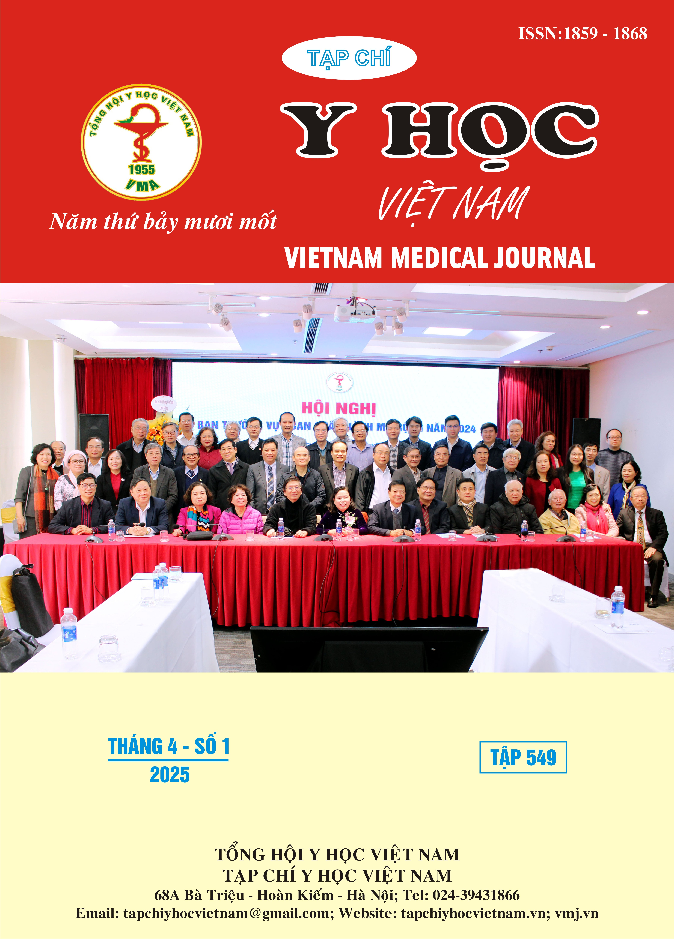PHÂN TÍCH CHI PHÍ – HIỆU QUẢ CỦA CÁC THUỐC CHỐNG ĐÔNG ĐƯỜNG UỐNG THẾ HỆ MỚI TRONG PHÒNG NGỪA ĐỘT QUỴ VÀ THUYÊN TẮC HỆ THỐNG Ở NGƯỜI BỆNH RUNG NHĨ KHÔNG DO VAN TIM TẠI VIỆT NAM
Nội dung chính của bài viết
Tóm tắt
Đặt vấn đề: Rung nhĩ không do van tim (non-valvular atrial fibrillation-NVAF) là một trong những bệnh lý với tỉ lệ hiện mắc và tử vong hàng đầu trên thế giới. Ngoài gánh nặng bệnh tật, căn bệnh này tạo ra hệ luỵ kinh tế đáng kể đến người bệnh (NB) và cả xã hội. Hiện nay thuốc chống đông đường uống thế hệ mới (novel oral anticoagulant – NOAC) ngày càng được sử dụng rộng rãi trong phòng ngừa đột quỵ và thuyên tắc huyết khối tĩnh mạch trên NB NVAF mạch. Tuy nhiên tại Việt Nam, nghiên cứu về tính chi phí-hiệu quả (CP-HQ) của các thuốc NOAC còn hạn chế. Phương pháp: Phân tích chi phí–hiệu quả theo quan điểm của cơ quan chi trả bảo hiểm y tế (BHYT) dựa trên mô hình Markov với dữ liệu đầu vào được thu thập từ các nghiên cứu lâm sàng, tổng quan y văn, tham vấn ý kiến chuyên gia; trong đó dữ liệu chi phí thuốc được tham khảo từ các danh mục trong thông tư do Bộ Y tế ban hành. Kết quả: Kết quả nghiên cứu ghi nhận apixaban vượt trội so với các thuốc NOAC khác (rivaroxaban và dabigatran); dabigatran vượt trội so với rivaroxaban trong phòng ngừa (PN) đột quỵ (ĐQ) và thuyên tắc hệ thống (TTHT) ở NB NVAF. So với VKA, các thuốc NOAC có giá trị ICER/QALY dao động từ 396.604.064 đến 1.691.290.848 VND. Như vậy, so với ngưỡng 3 lần giá trị thu nhập bình quân đầu người của Việt Nam năm 2023 (tương ứng 305,7 triệu VND), các thuốc NOAC không đạt CP-HQ so với VKA trong PN ĐQ và TTHT ở NB NVAF. Kết luận: Phân tích CP-HQ tại Việt Nam theo quan điểm cơ quan chi trả bảo hiểm y tế cho thấy apixaban tiết kiệm chi phí và giúp gia tăng hiệu quả vì vậy vượt trội so với các NOAC khác (rivaroxaban và dabigatran) trong phòng ngừa đột quỵ và thuyên tắc huyết khối tĩnh mạch ở người bệnh NVAF.
Chi tiết bài viết
Từ khóa
thuốc chống đông đường uống thế hệ mới, rung nhĩ không do van tim, NOAC, NVAF, chi phí–hiệu quả
Tài liệu tham khảo
2. B. J. Gersh, T. S. Tsang, J. B. J. T. o. T. A. c. Seward, and c. association, "The changing epidemiology and natural history of nonvalvular atrial fibrillation: clinical implications," vol. 115, p. 149, 2004.
3. A. Vergnenègre and C. Chouaïd, "Review of economic analyses of treatment for non-small–cell lung cancer (NSCLC)," Expert review of pharmacoeconomics & outcomes research, vol. 18, no. 5, pp. 519-528, 2018.
4. A. Birkinshaw, C. H. Fry, D. Fluck, P. Sharma, and T. S. Han, "Changing trends in the use of novel oral anticoagulants and warfarin for treating non-valvular atrial fibrillation," JRSM Cardiovascular Disease, vol. 9, p. 2048004020915406, 2020.
5. P. B. Roy et al., "Efficacy and Safety of Novel Oral Anticoagulants in Atrial Fibrillation: A Systematic Review," Cureus, vol. 15, no. 10, 2023.
6. D. Coyle et al., "Cost-effectiveness of new oral anticoagulants compared with warfarin in preventing stroke and other cardiovascular events in patients with atrial fibrillation," vol. 16, no. 4, pp. 498-506, 2013.
7. P. Dilokthornsakul, S. Nathisuwan, R. Krittayaphong, A. Chutinet, U. J. H. Permsuwan, Lung, and Circulation, "Cost-effectiveness analysis of non-vitamin K antagonist oral anticoagulants versus warfarin in Thai patients with non-valvular atrial fibrillation," vol. 29, no. 3, pp. 390-400, 2020.
8. M. Krejczy, J. Harenberg, M. Wehling, K. Obermann, and G. Y. J. B. r. i. Lip, "Cost‐Effectiveness of Anticoagulation in Patients with Nonvalvular Atrial Fibrillation with Edoxaban Compared to Warfarin in Germany," vol. 2015, no. 1, p. 876923, 2015.
9. T. T.-T. Edejer and T. T.-T. Edejer, Making choices in health: WHO guide to cost-effectiveness analysis. World Health Organization, 2003.
10. K. Peng, Y. Li, E. W. Chan, I. C. K. Wong, and X. Li, "Cost-Effectiveness of Direct Oral Anticoagulants in Patients With Nonvalvular Atrial Fibrillation in Hong Kong," Value in Health Regional Issues, vol. 36, pp. 51-57, 2023/07/01/ 2023.


